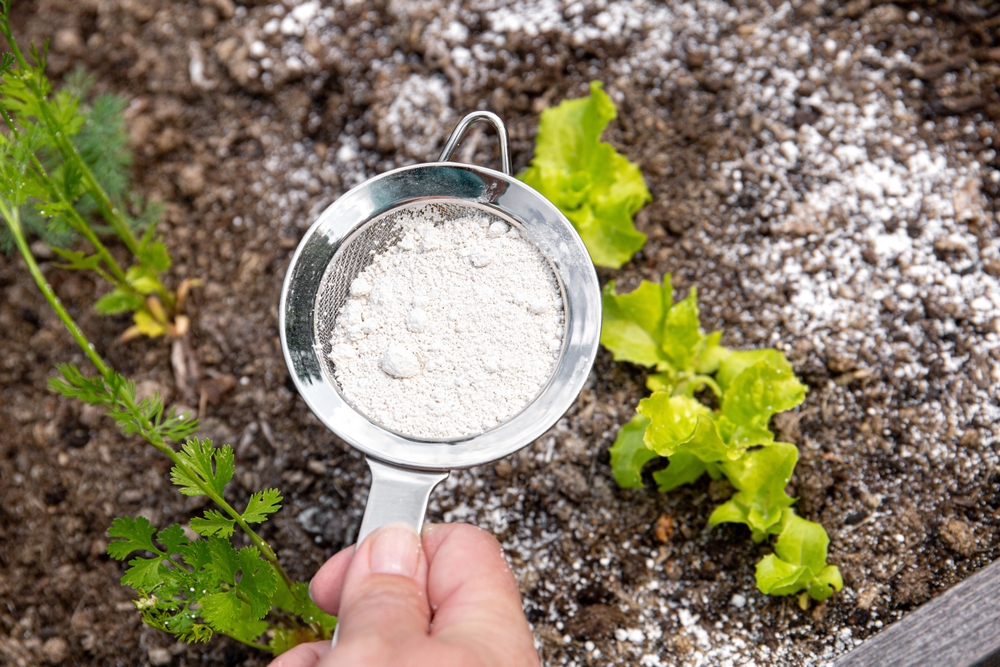
Using Diatomaceous Earth (DE) in the Garden
ADVERTISEMENT
I live in Central Texas and I have been using diatomaceous earth in my garden for several years now, especially when I plant my potato sets. For years, I would have a fire ant mound with almost every potato plant at harvest time and the potatoes themselves would be covered with fire ant bites. Now, I put DE in every hole at planting time, put the potatoes in and then put a dusting of DE on top of the potatoes before I cover them with dirt. The fire ant problem is now gone and no more fire ant bites on the potatoes!!! I even use DE when I plant my squash and some other things to keep bugs away from the roots.
If you're encouraging Monarch butterfly visits, D.E. is harmful to butterfly larvae (caterpillars) and other beneficial insects.
Can I put my chicken droppings with food grade DE in my compost?
You can certainly make compost with chicken poop; just make sure it’s properly aged (2 months or so) before adding to a food garden. You can also sprinkle food DE onto your compost which helps with pests. DE does not harm earthworms; they can actually eat it. Many worm farmers sprinkle DE on the surface of their worm bins to control fruit flies and fungus gnats.
Would you recommend using this in a chicken coop or for dust baths?
Do not use for a dust bath. You don’t want to be breathing in dust. However, diatomaceous earth is used in the chicken coop by owners to keep it mite- and lice-free. When you apply, wear a face mask if you are sensitive to dust. First, clean out all the old bedding, then sprinkle it on the floor and bottom of the nesting boxes. Let the dust settle and then put fresh bedding on top. You can also feed DE to chickens to prevent internal worms. The ratio is 2 percent diatomaceous earth in the feed you give them. Always make sure it’s FOOD-grade DE.
From what I have read, no. DE can irritate the lungs and since birds stir up lots of dust while taking a dust bath, they can breathe in the DE, causing health issues.
However, we used DE on our dog when she was a puppy to keep her flea and tick free and it seems to have worked without any adverse effects. Of course, we sprinkled it onto her tummy and rubbed it into her fur so she wasn't breathing it in. Plus, dogs are not nearly as fragile as birds and have more mass than most birds, so they can withstand more physical stress.
I am not a vet, just a bird, dog and cat owner. Your mileage may vary but I won't risk it with my chickens and Guinea fowl.
I Have sprinkled about 3 inches wide of diatomaceous earth around the perimeter at the base of my house to stop the carpenter ants. They used to climb up to my roof and ceilings. I also put it under and around my wood pile. I works great.
Never had this problem before: I have big black ants 1/2" interfering with my okra set. They get on the base of the flowers and the flowers can abort the fruit or disfigure the pods. Will diatomaceous earth at the base of plants keep them off?
If you have gnats flying around your house and can't figure out where they're coming from and have indoor potted plants, try this. Just sprinkle it on top of the soil and you will be rid of those pesky gnats. Fungus gnats lay their eggs in the soil and then hatch out and the cycle goes on and on. I also use it on my four dogs as a natural flea powder, works great.










